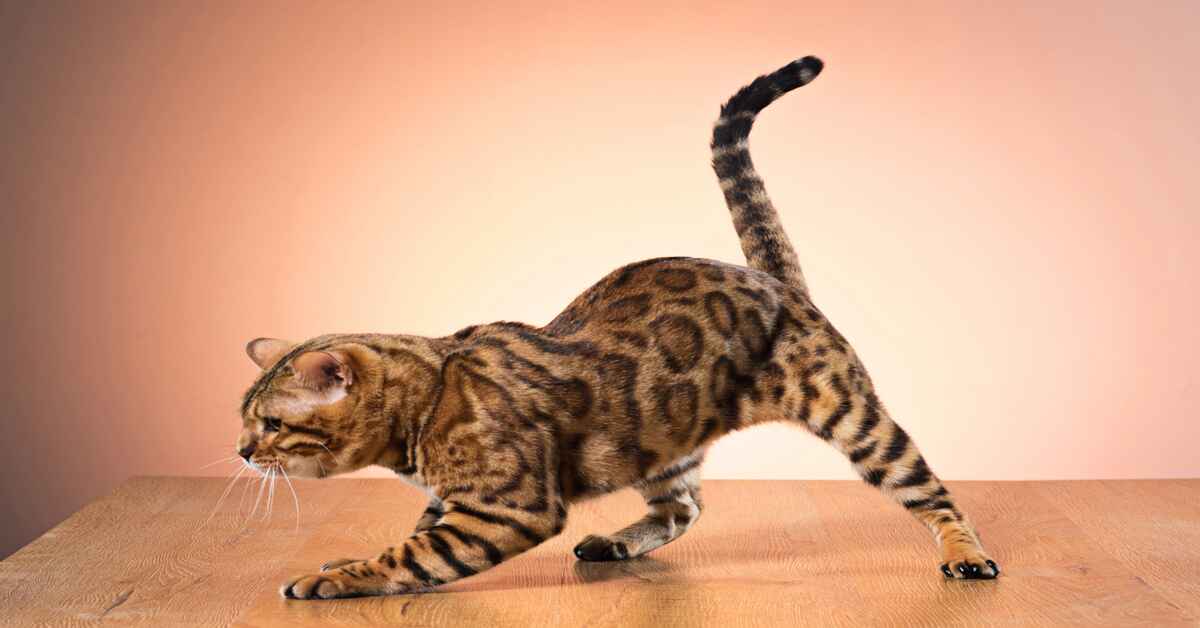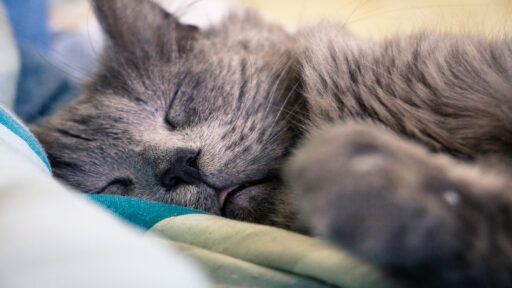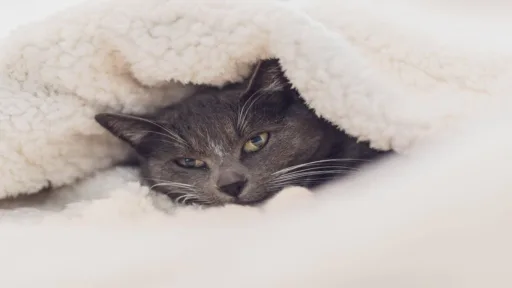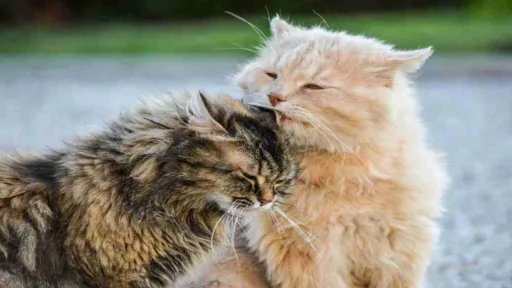Muscles on a cat, understanding a cat’s muscular system is pivotal as it underpins their agility, movement, and holistic well-being. Furthermore, muscles serve as the powerhouse, enabling a cat’s swift and graceful movements, essential for hunting, climbing, and play
Beyond mere locomotion, muscles contribute significantly to a cat’s overall health, supporting their posture, balance, and flexibility. By comprehending how these muscles function and their role in a cat’s body, we gain insight into maintaining their fitness, preventing injuries, and ensuring a vibrant and active life for our feline companions.
Anatomy of Cat Muscles:
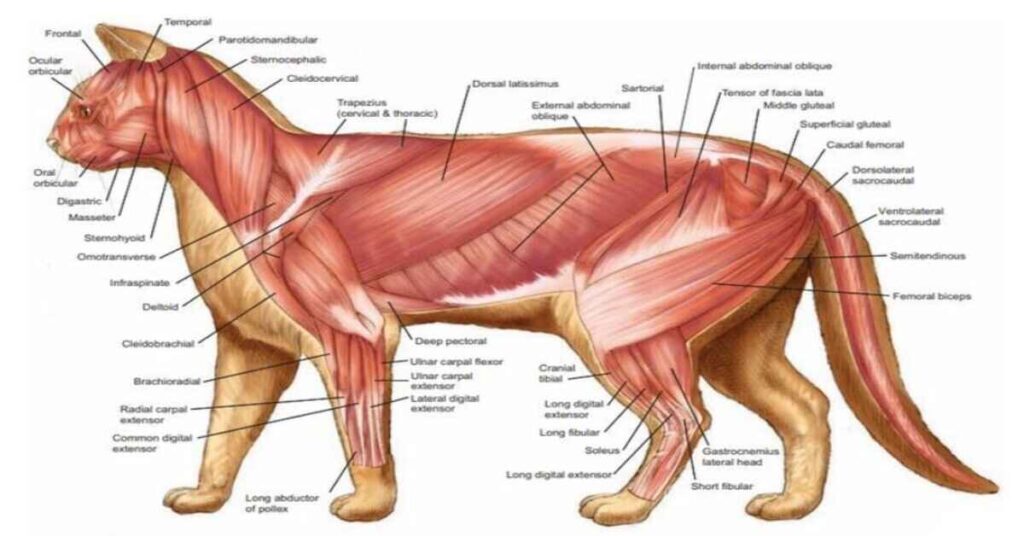
Primary Muscle Groups in Cats:
- Forelimb Muscles:
- Located in the front legs, these muscles facilitate actions like scratching, grasping objects, and supporting the body during movement.
- Hindlimb Muscles:
- Found in the hind legs, these muscles are crucial for running, jumping, and maintaining balance while leaping or landing.
- Trunk Muscles:
- Muscles in the trunk area provide core support, allowing cats to twist, bend, and maintain stability while in motion or resting.
- Head and Neck Muscles:
- Responsible for movements such as grooming, turning the head, and expressing various facial expressions.
Differences between Skeletal, Smooth, and Cardiac Muscles:
- Skeletal Muscles:
- Skeletal muscles are voluntary muscles attached to bones and enable voluntary movements like walking or jumping. Moreover, these muscles are striated and controlled consciously by the nervous system
- Smooth Muscles:
- Found in organs like the digestive tract, blood vessels, and respiratory passages.
- Smooth muscles are involuntary and control functions like peristalsis (movement of food through the digestive system) and blood vessel constriction.
- Cardiac Muscles:
- Unique to the heart and responsible for its rhythmic contractions to pump blood throughout the body.
- Cardiac muscles are involuntary and possess a distinctive ability to contract rhythmically without fatigue.
Contributions to a Cat’s Physiology:
- Skeletal muscles enable precise movements necessary for a cat’s agility, hunting, and climbing abilities.
- Smooth muscles in the digestive system aid in the processing of food, while those in blood vessels help regulate blood flow.
- Cardiac muscles maintain the heart’s continuous pumping action, ensuring proper circulation and oxygenation of blood throughout the body.
Understanding these different muscle types and their functions is essential in comprehending a cat’s physiology, their capabilities, and the intricate mechanisms that govern their movements and overall bodily functions.
Muscle Functionality in Cats:
Muscle Functionality in Cat Movements:
- Running:
- Muscles on a cat, hind legs generate powerful propulsion for swift running.
- Forelimb muscles aid in maintaining balance and steering while running at high speeds.
- Jumping:
- Powerful hindlimb muscles provide the force needed for high and precise jumps.
- Core and trunk muscles stabilize the body mid-air and during landing.
- Climbing:
- Muscles on a cat, paws, and forelimbs facilitate gripping and pulling while climbing.
- Strong trunk and hindlimb muscles support the body’s weight during ascent.
- Stalking:
- Muscles in the legs enable stealthy, slow movements during stalking, preparing for a swift pounce.
- Forelimb and trunk muscles aid in maintaining a low, stealthy posture.
Muscles on a Cat System in Balance, Reflexes, and Coordination:
- Balance:
- Cat muscles in the legs, trunk, and tail act as stabilizers, ensuring balance on narrow surfaces or while making precise movements.
- Fine-tuned adjustments in muscle contractions aid in maintaining equilibrium, essential for navigating various terrains.
- Reflexes:
- Rapid muscle responses contribute to a cat’s remarkable reflexes, such as landing on their feet when falling (righting reflex) or quickly retracting a paw from a hot surface.
- Muscles play a crucial role in these reflex actions, allowing rapid and instinctive responses.
- Coordination:
- Cat muscles work in synchrony, ensuring coordinated movements during complex actions like stalking, pouncing, or navigating obstacles.
- Precise muscle control allows for smooth and coordinated motion necessary for hunting or play.
The muscular system in cats is fundamental in enabling a diverse range of movements, from swift running and precise jumping to stealthy stalking. Additionally, these muscles play a pivotal role in maintaining balance, executing reflexive actions, and ensuring seamless coordination, highlighting the incredible agility and prowess of these feline athletes.
Unique Features of Cat Muscles:
Unique Muscular Adaptations in Cats:
- Muscle Composition:
- Cats possess a high proportion of fast-twitch muscle fibers compared to other animals. Consequently, these fibers provide rapid bursts of energy, contributing to their explosive speed and agility.
- Flexibility and Range of Motion:
- Cat muscles are exceptionally flexible, allowing for an extensive range of motion in their limbs. This flexibility aids in their ability to stretch, leap, and contort their bodies mid-air during complex movements.
- Precision and Strength:
- The muscular structure in a cat’s forelimbs and paws is well-suited for precise and powerful movements; consequently, this is pivotal for grasping, holding, and manipulating objects or prey
Contribution to Hunting Prowess and Behaviors:
- Speed and Agility:
- The abundance of fast-twitch muscle fibers allows cats to accelerate quickly and achieve high speeds in short bursts, essential for chasing and capturing prey.
- Stealth and Flexibility:
- Flexible muscles enable cats to move silently and stealthily, approaching prey without alerting them. This flexibility aids in sudden changes of direction or leaping from concealed positions during the hunt.
- Precision and Grip:
- Moreover, muscular adaptations in the forelimbs and paws provide cats with exceptional dexterity and gripping abilities, thereby enabling them to manipulate objects or secure prey effectively.
- Strength and Power:
- The combination of powerful hindlimb muscles and a flexible spine grants cats the ability to leap great distances and heights, pouncing on prey with significant force.
These unique muscular adaptations in cats are evolutionary advantages that have honed their hunting prowess. Consequently, their muscles are finely tuned for speed, agility, precision, and strength, enabling them to execute complex hunting behaviors with remarkable efficiency and success
Muscles on a cat – Growth and Development:
Muscle Development from Kittenhood to Adulthood:
- Kittenhood:
- During kittenhood, muscles undergo rapid development and growth.
- Initially, kittens have limited muscle coordination but gradually develop strength and coordination through play and exploration.
- Adolescence to Adulthood:
- As kittens transition to adolescence and adulthood, their muscles continue to develop and strengthen.
- Physical activity, including play, climbing, and running, plays a crucial role in muscle development during this phase.
Factors Influencing Muscles on a Cat Growth and Maintenance:
- Diet:
- Proper nutrition is vital for muscle growth and maintenance. Additionally, protein, essential amino acids, and adequate calories support muscle development in kittens and adult cats. Quality cat food that meets their nutritional needs contributes to healthy muscle growth
- Exercise:
- Physical activity, such as play sessions and access to climbing structures or toys, stimulates muscle growth and maintains muscle tone.
- Regular exercise supports healthy muscle development and overall fitness.
- Genetics:
- Genetic factors play a role in determining a cat’s muscle mass and structure.
- Some breeds may have genetic predispositions for specific muscle traits, influencing their overall muscular development.
- Health and Lifestyle:
- Overall health and lifestyle factors, including adequate rest, stress management, and a stimulating environment, contribute to healthy muscle growth and maintenance.
- Cats in good health are more likely to develop and maintain strong muscles.
Understanding the factors influencing muscle development is crucial in ensuring a cat’s healthy growth from kittenhood to adulthood. Additionally, providing a balanced diet, encouraging physical activity, and considering genetic predispositions all contribute to fostering strong and healthy muscles in cats.
Common Muscles on Cat-Related Health Issues:
Muscle-Related Health Problems in Cats:
- Strains and Sprains:
- Cats can experience strains or sprains due to overexertion, sudden movements, or jumping from heights.
- Symptoms include limping, reluctance to move, or signs of discomfort.
- Myositis:
- Myositis refers to inflammation of the muscles, which can be caused by infections, immune system disorders, or certain medications. Additionally, symptoms may include muscle pain, weakness, fever, and reluctance to move.
Preventive Measures and Treatments:
- Prevention:
- Ensure a safe environment to minimize the risk of falls or injuries that could lead to strains or sprains.
- Avoid overexertion during play sessions to prevent muscle fatigue or injuries.
- Treatment for Strains and Sprains:
- Rest: Limit movement to allow healing. Provide a comfortable, quiet space for your cat to rest.
- Cold Compress: Apply a cold compress to the affected area to reduce swelling and pain.
- Veterinary Consultation: Severe strains or sprains might require veterinary evaluation and potential treatment.
- Treatment for Myositis:
- Veterinary Assessment: Consult a veterinarian to diagnose the underlying cause of myositis, which may require blood tests or imaging.
- Medications: Treatment may involve anti-inflammatory drugs or antibiotics, depending on the cause of the inflammation.
- Supportive Care: Provide a quiet and comfortable environment to help your cat rest and recover.
- Rehabilitation and Care:
- Gentle exercise and physical therapy under veterinary guidance can aid in recovery from strains, sprains, or myositis. Moreover, follow your veterinarian’s instructions regarding medication, rest, and rehabilitation.
Preventive measures, such as ensuring a safe environment and avoiding excessive physical strain, are crucial in minimizing the risk of muscle-related injuries in cats.
Prompt veterinary consultation and appropriate treatment help in managing and treating muscle-related health issues in feline companions.
Muscles on a cat Care and Maintenance:
Promoting Healthy Muscle Development:
- Nutrition:
- Ensure a balanced diet rich in high-quality protein, essential amino acids, and appropriate nutrients. Choose cat food specifically formulated to support muscle development and overall health.
Read more about cat nutrition!
- Ensure a balanced diet rich in high-quality protein, essential amino acids, and appropriate nutrients. Choose cat food specifically formulated to support muscle development and overall health.
- Exercise:
- Encourage regular play sessions with interactive toys to stimulate movement and exercise. Additionally, provide climbing structures or cat trees to promote physical activity and muscle engagement.
Recognizing Signs of Muscle-Related Issues:
- Limping or Reluctance to Move:
- Notice any changes in your cat’s movement, such as limping, favoring one leg, or reluctance to jump or climb.
- Discomfort or Pain:
- Signs of discomfort, such as vocalization, reluctance to be touched in specific areas, or abnormal posture, might indicate muscle-related issues.
- Changes in Mobility or Activity Level:
- Monitor any decrease in your cat’s usual activity level, reluctance to play, or sudden changes in mobility.
Muscles on a cat, Seeking Veterinary Care:
- Immediate Attention:
- If you notice signs of muscle-related issues or if your cat has experienced an injury, seek veterinary care promptly. Early intervention can prevent further complications and aid in faster recovery.
- Veterinary Assessment:
- Visit a veterinarian for a thorough examination and proper diagnosis if you suspect muscle-related problems. Your vet may perform tests, such as physical exams, X-rays, or blood work, to determine the underlying cause.
- Follow Veterinarian’s Advice:
- Follow the veterinarian’s treatment plan diligently, including medication, rest, or any recommended therapies or exercises.
By providing a nutritious diet, encouraging regular exercise, and being vigilant about changes in your cat’s behavior or mobility, additionally, you can promote healthy muscle development.”Recognizing early signs of muscle-related issues and seeking prompt veterinary care are crucial steps in ensuring your cat’s muscular health and overall well-being.
What are the muscles on a cat’s shoulder?
In a cat’s shoulder, the major muscles include:
- Supraspinatus: Located above the scapula, aiding in lifting the forelimb and stabilizing the shoulder joint.
- Infraspinatus: Positioned beneath the scapula, assisting in outward rotation of the forelimb.
- Subscapularis: Situated beneath the scapula, supporting the forelimb’s inward rotation.
These muscles, along with others, work collectively to facilitate the range of movements and stability in a cat’s shoulder joint.
Conclusion
Understanding a cat’s muscular system is pivotal for their well-being. It directly influences their agility, movements, and overall health. By comprehending how muscles enable various actions and contribute to a cat’s balance, reflexes, and coordination, cat owners gain insight into their pet’s needs.
Encouraging proper muscles in a cat’s development through nutrition, exercise, and attentive care is crucial for a cat’s healthy and active lifestyle. Prioritizing muscle care not only aids in preventing injuries but also ensures that feline companions thrive in their daily activities, leading to a happier and healthier life.

